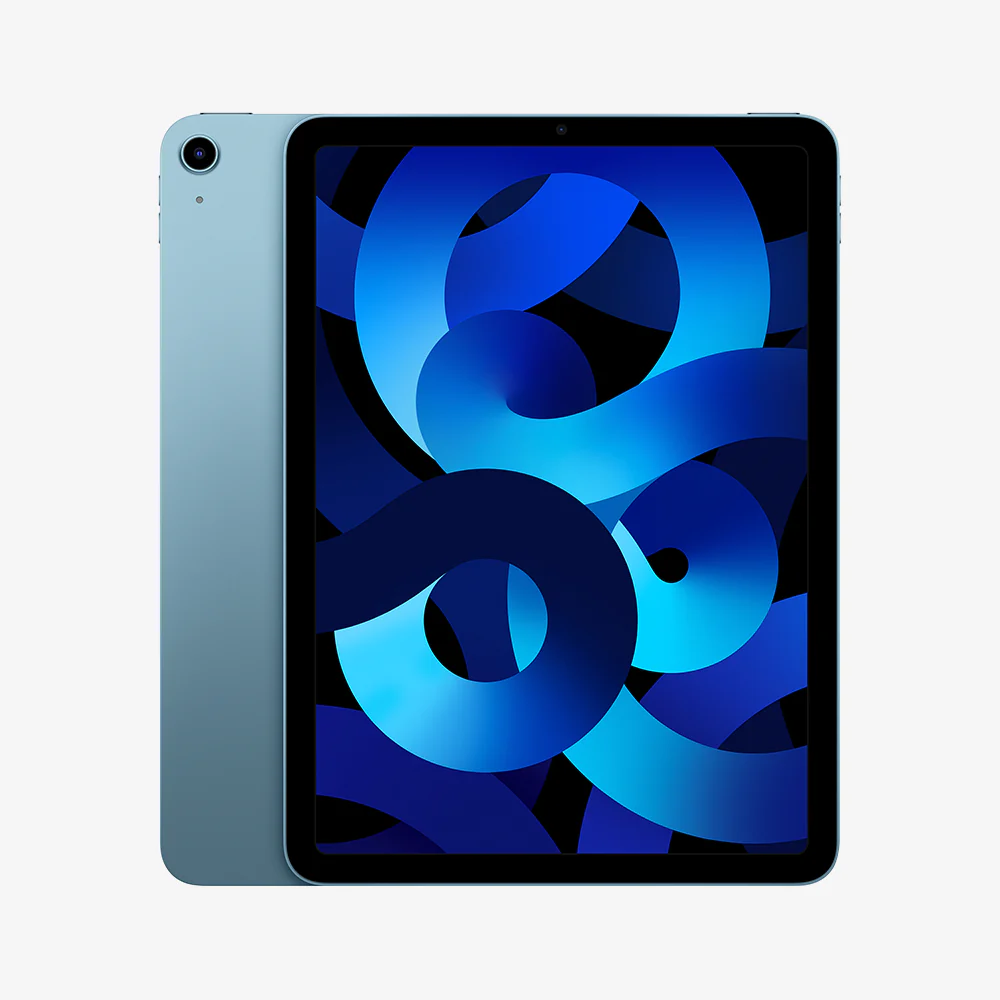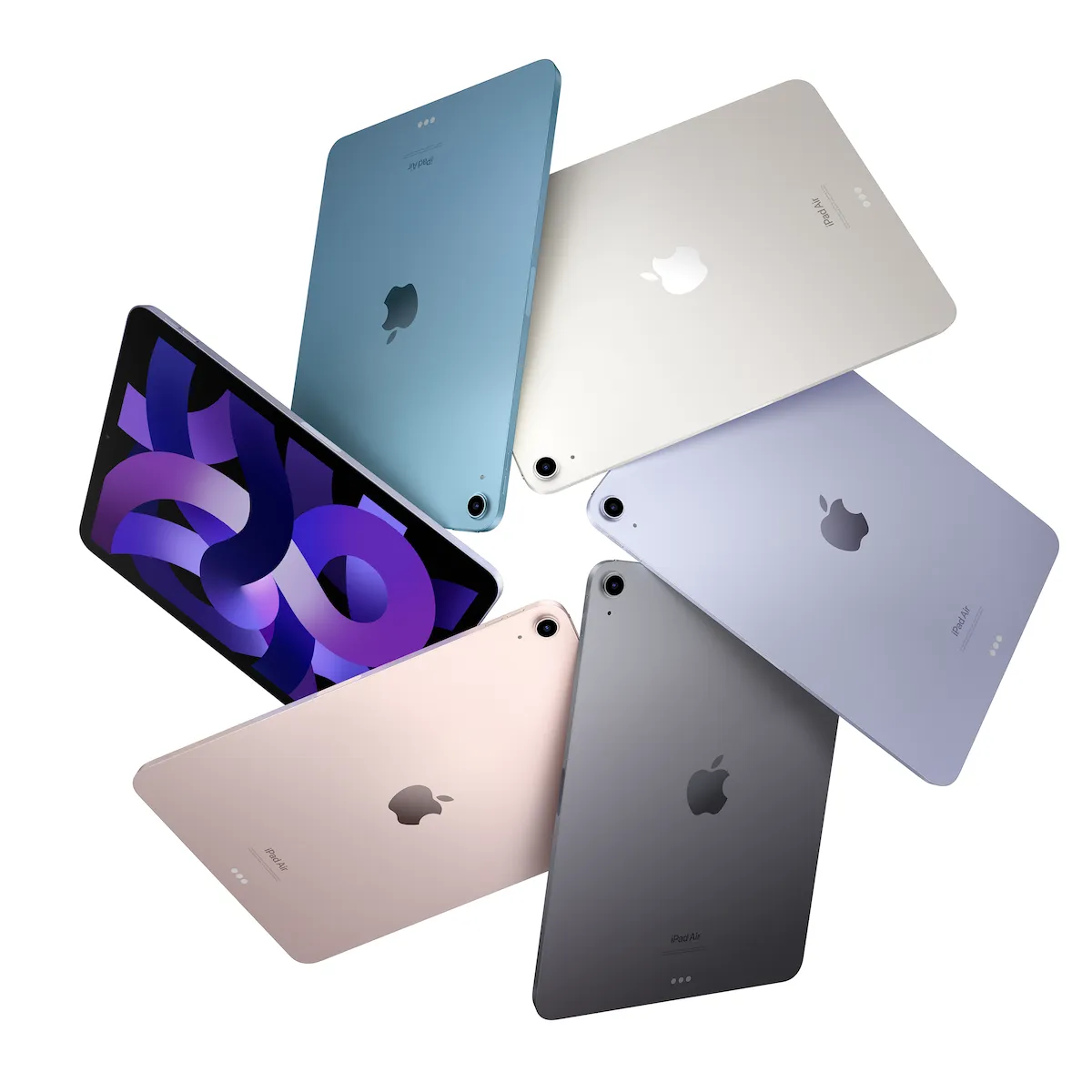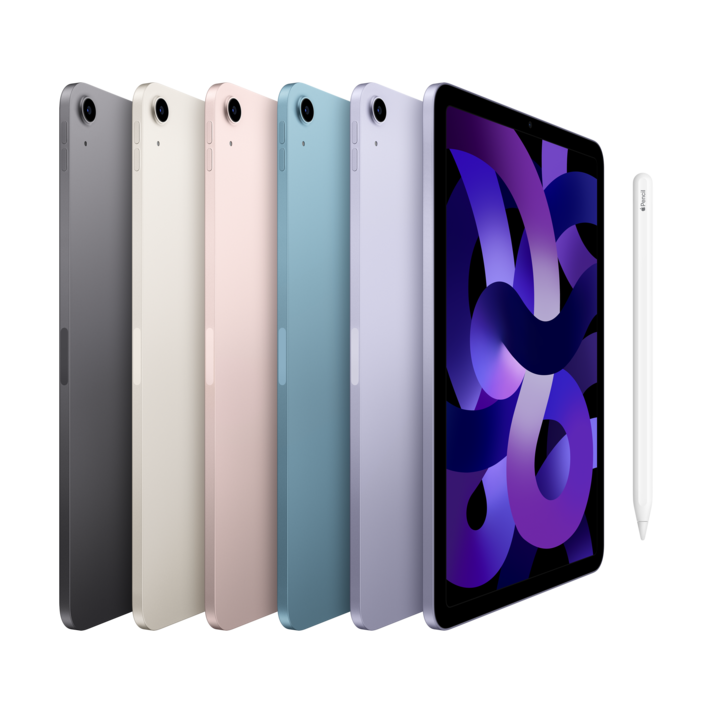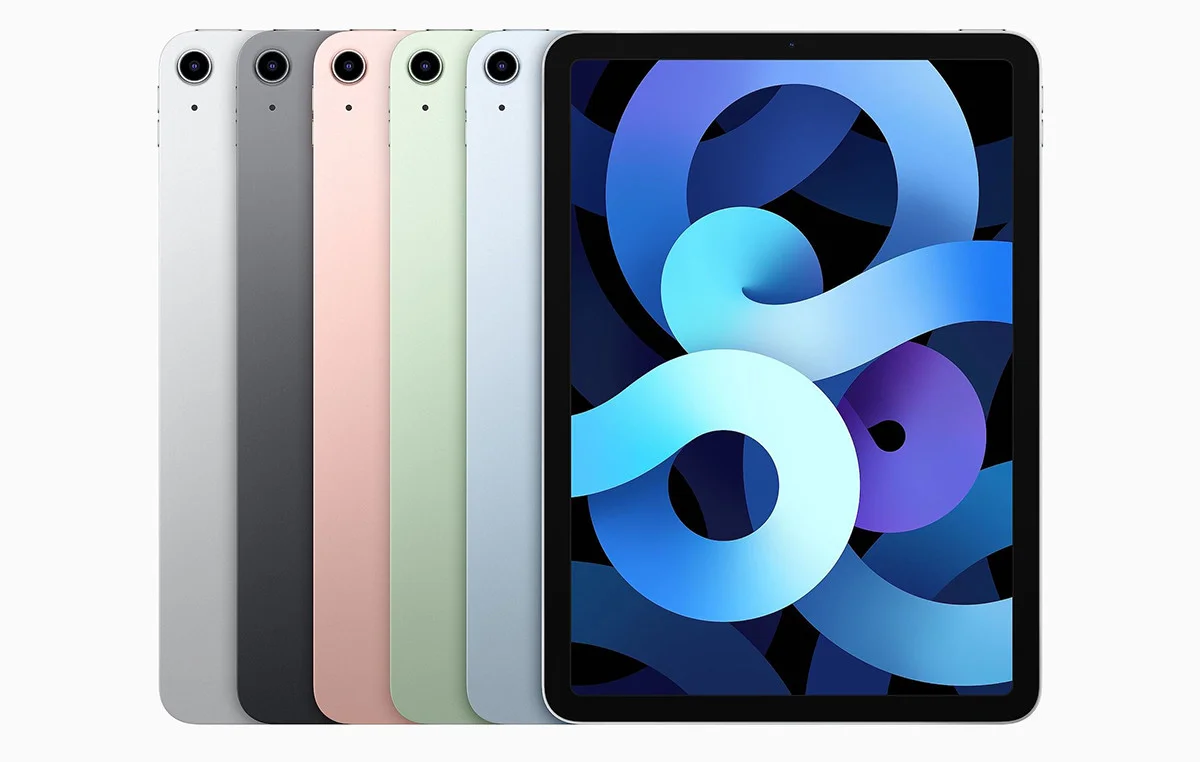Apple iPad Air 5
Retail Price
$599.00
Lowest Price
$499.99
Release Date
March 18, 2022
The Apple iPad Air 5 is, by many metrics, considered an upgrade to the old iPad Air 4, in that it one will be getting a more powerful iPad with all the benefits of the iPad Air 4, but with the more capable chip, more RAM, better front-facing camera with Center Stage, faster transfer speeds, and a 5G option.
Purchase Links
Overview
- Upgrade
- Target Market
- Value for Money
- Build
- Display
- Battery
- Camera
- Chipset
- Compatibility
- Connectivity
- Design
- Improvements
- Storage
- Overview
- Positive
- Negative

Tech Gear Talk

Dave2D

mezzox33142

GadgetMatch

techradar - Gareth Beavis

Dave2D

Tech Gear Talk

Tech Gear Talk

The Verge - Dan Seifert

Tech Gear Talk

The Verge - Dan Seifert
Pros & Cons
- Pros
- Cons
- Positive
- Negative

The Verge - Dan Seifert

The Verge - Dan Seifert
Build & Design
- Accessories
- Build
- Color
- Design
- Material
- Size
- Weight
- Positive
- Negative

GadgetMatch

GadgetMatch

The Verge - Dan Seifert

techradar - Gareth Beavis
Display
- Display
- Display - Monitor
- Positive
- Negative

GadgetMatch
Features
- Advantages
- Accessories
- Accessories - Apple Pencil
- Accessories - Magic Keyboard
- Battery
- Biometrics
- Charger
- Connector - USB-C
- Compatibility
- Face ID
- Gaming
- Operating System
- Performance
- Screen
- Speaker
- Storage
- Touch ID
- Positive
- Negative

CNET - Scott Stein

The Verge - Dan Seifert

Tech Gear Talk

techradar - Gareth Beavis

The Verge - Dan Seifert

techradar - Gareth Beavis

Dave2D

techradar - Gareth Beavis
Processor
- Chipset
- Performance
- Processor
- Positive
- Negative

The Verge - Dan Seifert

The Verge - Dan Seifert

The Verge - Dan Seifert

The Verge - Dan Seifert

The Verge - Dan Seifert

The Verge - Dan Seifert

The Verge - Dan Seifert

The Verge - Dan Seifert

techradar - Gareth Beavis

techradar - Gareth Beavis
Connectivity
- Connectivity
- Ports
- Positive
- Negative

The Verge - Dan Seifert
Camera
- Camera
- Video
- Centerstage
- LiDAR
- Positive
- Negative

techradar - Gareth Beavis

techradar - Gareth Beavis
Price
- Price
- Price- Storage
- Positive
- Negative
Comparison
- Previous Model
- Regular IPad
- IPad Pro
- Ipad Mini 6
- Positive
- Negative

jepiter
Miscellaneous
- Comment
- Features
- Limitations
- Productivity
- Software Updates
- Speakers
- Storage
- Usage
- Positive
- Negative

Tech Gear Talk

CNET - Scott Stein

CNET - Scott Stein

Appropriate-Term-917

Dave2D

Dave2D

GadgetMatch
Youtube Comments
- Build Quality - Comment
- Comparison - Mac Book Pro
- Display - Pro
- GPU - Comment
- Orientation - Con
- Performance - Con
- Performance - Pro
- Portability - Pro
- Price - Con
- Price - Pro
- Processor - Con
- Processor - Comment
- Processor - Pro
- RAM - Pro
- Refresh Rate - Con
- Size - Pro
- Speakers - Pro
- Storage - Con
- Storage - Pro
- Positive
- Negative

108 U, Max Tech

Jim Mulvaney, Tech Gear Talk

Pro Media, Max Tech

lenn 55, Max Tech

Joel Anderson, Dave2D

AvS, Dave2D

Shadow_Lite, Dave2D

Ugg Ooga, Dave2D

Ken Matharoo, Dave2D

Michael San, Max Tech

Alina Carmenatis

Omar Mangin, Max Tech

Rahul Jayachandran, GadgetMatch

Daniel Dougan, Dave2D

Caden Churchill, GadgetMatch

Nscurre, Tech Gear Talk








Comments